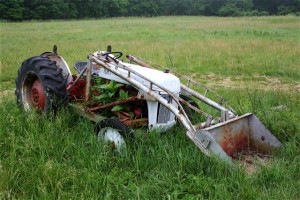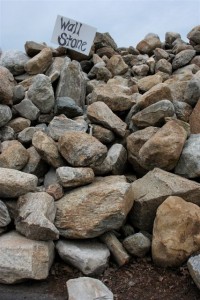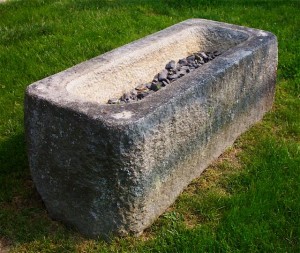
The worst thing you can do is to go to a garden/supply store and buy pallets of old fieldstone with the bruised lichens still hanging on them. First, they are the most expensive stones, at least several hundred dollars per ton. Second, these are usually either strip-mined from old farmsteads, often by the owner of the property preparing for housing development. Alternatively, they may be rustled from some remote site, often public land.
There are four basic sources of fresh stone:
QUARRIES
The best thing to do is to purchase fresh stone from an active quarry in bedrock. Some so-called quarries are really “yards” where strip-mined stone is gathered, sorted and sold. Many New England towns have active rock quarries that produce slabs that are perfect for construction. The price is somewhat lower than for strip-mined stone because the supply exceeds the demand. I can’t list private businesses on this public website, but you can easily find it by entering this three-word phrase into your search field: wall stone quarry.

EXCAVATIONS:
Excavation is a common activity during construction of buildings and roads. Doing so in either bedrock terrains or glacial soils often yields materials that can be used to build a stone wall. The Big Dig in Boston, for example, produced boulders that were later used for walls. Bedrock excavation yields angular blocks and slabs that are often used for walls. Typically it is not advertised, but you can ask at the site. They might be getting rid of it as waste. Boulders can be found by searching for: sand gravel stone
SOIL STONE:
Though this is more work, it is quite satisfying for the homeowner who wants to work with his or her own land. Lands being cleared of trees often produce a litter of stone that can be collected. Slabs can be plucked from the surface soil. Large boulders can be gubbed up from the ground, often with heavy equipment.
CONCENTRATIONS:
Natural: Many properties have natural concentrations of stone that can be harvested for their stone without seriously compromising the historic archaeology of old walls.
Piles: The early phase of managing waste stone on farms often produced stone piles scattered here and there. These are artifacts of the past and should be left alone, if possible. However, under most circumstances, it’s probably better to remove a whole pile and turn it into a segment of a wall, than to take an old segment of wall and move it somewhere else.
Old Walls: Whenever possible, old walls should be left in place, especially in the vicinity of old foundations and cellar holes and along roads (abandoned or being used). If you must take stone from an old wall (and this is your choice as a landowner), then leave the corners, ends, special structures, barways and gates intact. Always take a mixture of damaged and undamaged sections, so as to preserve the range of present conditions. A good rule of thumb is to look at the wall and ask yourself what sections, if left, would preserve the present range of variation. Finally, take stone from as few places as possible.
